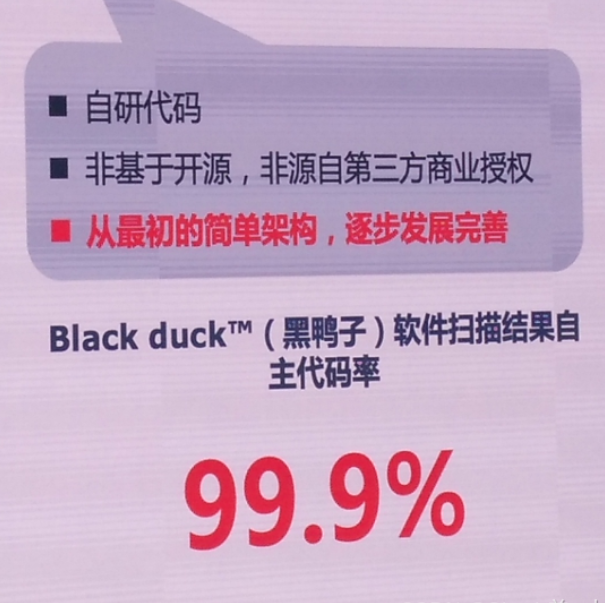Python Numpy 实现神经网络自动训练:反向传播与激活函数的应用详解
这篇文章介绍了如何使用 Python 的 Numpy 库来实现神经网络的自动训练,重点展示了反向传播算法和激活函数的应用。反向传播是神经网络训练的核心,能够通过计算梯度来优化模型参数,使得预测更加精准。文中详细演示了如何使用 Numpy 进行神经网络的前向预测、反向传播更新、误差计算,并通过引入 ReLU 等激活函数提升模型的非线性拟合能力。最后,通过对比训练前后的结果,展示了加入激活函数后模型性能的显著提升,适合初学者和爱好者学习神经网络的基础原理与应用。
文章目录
- Python Numpy 实现神经网络自动训练:反向传播与激活函数的应用详解
- 一 简单介绍反向传播
- 二 用 Numpy 来做神经网络
- 没有训练
- 开始训练
- 三 加入激活函数
- 常用激活函数
- 非线性计算,不加激活函数
- 非线性计算,加入激活函数
- 四 完整代码示例
- 五 源码地址
一 简单介绍反向传播
反向传播(Backpropagation)是训练神经网络的核心算法,用于通过计算损失函数相对于网络各个参数的梯度,逐步优化这些参数,从而使模型的预测结果更加准确。使用梯度反向更新规则做神经网络参数优化调整。
这段代码计算每一层神经层的更新幅度,让神经网络对数据拟合变好,不理解先当工具方法记住。
def backprop(dz, layer, layer_in, learning_rate=0.01):
"""
进行反向传播,更新当前层的权重和偏置,并计算传递给前一层的梯度。
参数:
dz: 当前层输出的梯度(损失函数对激活输出的偏导数)
layer: 当前层的参数字典,包含权重 "w" 和偏置 "b"
layer_in: 输入到当前层的激活值
learning_rate: 学习率,用于控制参数更新的步长,默认值为 0.01
返回:
new_dz: 传递给前一层的梯度
"""
# 计算损失函数对权重的梯度,layer_in.T 是当前层输入的转置,dot(dz) 进行矩阵乘法
gw = layer_in.T.dot(dz)
# 计算损失函数对偏置的梯度,按列求和,保留维度,求得每个偏置的梯度
gb = np.sum(dz, axis=0, keepdims=True)
# 计算传递给前一层的梯度,使用当前层的权重转置与 dz 相乘
new_dz = dz.dot(layer["w"].T)
# 更新当前层的权重:使用学习率乘以权重梯度,然后加到原有的权重上(梯度上升)
layer["w"] += learning_rate * gw
# 更新当前层的偏置:同样使用学习率乘以偏置梯度,然后加到原有的偏置上
layer["b"] += learning_rate * gb
# 返回传递给前一层的梯度,以便继续进行反向传播
return new_dz
二 用 Numpy 来做神经网络
没有训练
def predict(x, l1, l2):
o1 = x.dot(l1["w"]) + l1["b"]
o2 = o1.dot(l2["w"]) + l2["b"]
return [o1, o2]
def predict01():
# 数据
x = np.linspace(-1, 1, 10)[:, None] # shape [10, 1]
y = np.random.normal(loc=0, scale=0.2, size=[10, 1]) + x # shape [10, 1]
# 搭建模型
l1 = layer(1, 3)
l2 = layer(3, 1)
draw_line(x, predict(x, l1, l2)[-1])
draw_scatter(x, y)
运行结果

可以看出在没有训练的时候,模型预测的结果与实际 y 值在数量级上存在较大差异。
开始训练
def predict02():
# 数据
x = np.linspace(-1, 1, 10)[:, None] # shape [10, 1]
y = np.random.normal(loc=0, scale=0.2, size=[10, 1]) + x # shape [10, 1]
l1 = layer(1, 3)
l2 = layer(3, 1)
# 训练 50 次
learning_rate = 0.01
for i in range(50):
# 前向预测
o1, o2 = predict(x, l1, l2)
# 误差计算
if i % 10 == 0:
average_cost = np.mean(np.square(o2 - y))
print(average_cost)
# 反向传播,梯度更新
dz2 = -2 * (o2 - y) # 输出误差 (o2 - y)**2 的导数
dz1 = backprop(dz2, l2, o1)
_ = backprop(dz1, l1, x)
# 画一个训练后的图,对比上文中有数值问题的线
draw_line(x, predict(x, l1, l2)[-1])
draw_scatter(x, y)
运行结果

三 加入激活函数
常用激活函数
# 激活函数
def relu(x):
return np.maximum(0, x)
def relu_derivative(x): # 导数
return np.where(x > 0, np.ones_like(x), np.zeros_like(x))
def tanh(x):
return np.tanh(x)
def tanh_derivative(x): # 导数
return 1 - np.square(np.tanh(x))
def sigmoid(x):
return 1 / (1 + np.exp(-x))
def sigmoid_derivative(x): # 导数
o = sigmoid(x)
return o * (1 - o)
非线性计算,不加激活函数
def predict03():
# 非线性计算
x = np.linspace(-1, 1, 30)[:, None] # shape [30, 1]
y = np.random.normal(loc=0, scale=0.2, size=[30, 1]) + x ** 2 # shape [30, 1]
# draw_scatter(x, y)
# 搭建模型
l1 = layer(1, 10)
l2 = layer(10, 1)
# 训练 300 次
learning_rate = 0.01
for i in range(300):
# 前向预测
o1, o2 = predict(x, l1, l2)
# 误差计算
if i % 10 == 0:
average_cost = np.mean(np.square(o2 - y))
print(average_cost)
# 反向传播,梯度更新
dz2 = -2 * (o2 - y) # 输出误差 (o2 - y)**2 的导数
dz1 = backprop(dz2, l2, o1)
_ = backprop(dz1, l1, x)
draw_line(x, predict(x, l1, l2)[-1])
draw_scatter(x, y)
运行结果

模型训练结果在量级上出现较大差距,欠拟合。
非线性计算,加入激活函数
def predict04():
# 非线性计算
x = np.linspace(-1, 1, 30)[:, None] # shape [30, 1]
y = np.random.normal(loc=0, scale=0.2, size=[30, 1]) + x ** 2 # shape [30, 1]
# 搭建模型
l1 = layer(1, 10)
l2 = layer(10, 1)
# 训练 300 次
learning_rate = 0.01
for i in range(300):
# 前向预测
o1, a1, o2 = predictjihuo(x, l1, l2)
# 误差计算
if i % 10 == 0:
average_cost = np.mean(np.square(o2 - y))
print(average_cost)
# 反向传播,梯度更新
dz2 = -2 * (o2 - y) # 输出误差 (o2 - y)**2 的导数
dz1 = backprop(dz2, l2, a1)
dz1 *= relu_derivative(o1) # 这里要添加对应激活函数的反向传播
_ = backprop(dz1, l1, x)
draw_line(x, predictjihuo(x, l1, l2)[-1])
draw_scatter(x, y)
运行结果

模型成功拟合了这些异常数据点,说明非线性激活函数确实非常有效。
四 完整代码示例
# This is a sample Python script.
from matplotlib import pyplot as plt
import numpy as np
# Press ⌃R to execute it or replace it with your code.
# Press Double ⇧ to search everywhere for classes, files, tool windows, actions, and settings.
def draw_scatter(x, y):
# 使用 matplotlib 的 scatter 方法来绘制散点图
# x.ravel() 和 y.ravel() 将 x 和 y 的二维数组转换为一维数组,适合作为散点图的输入
plt.scatter(x.ravel(), y.ravel())
# 显示图表
plt.show()
def draw_line(x, y):
idx = np.argsort(x.ravel())
plt.plot(x.ravel()[idx], y.ravel()[idx])
# plt.show()
def layer(in_dim, out_dim):
weights = np.random.normal(loc=0, scale=0.1, size=[in_dim, out_dim])
bias = np.full([1, out_dim], 0.1)
return {"w": weights, "b": bias}
# 激活函数
def relu(x):
return np.maximum(0, x)
def relu_derivative(x): # 导数
return np.where(x > 0, np.ones_like(x), np.zeros_like(x))
def tanh(x):
return np.tanh(x)
def tanh_derivative(x): # 导数
return 1 - np.square(np.tanh(x))
def sigmoid(x):
return 1 / (1 + np.exp(-x))
def sigmoid_derivative(x): # 导数
o = sigmoid(x)
return o * (1 - o)
def backprop(dz, layer, layer_in, learning_rate=0.01):
"""
进行反向传播,更新当前层的权重和偏置,并计算传递给前一层的梯度。
参数:
dz: 当前层输出的梯度(损失函数对激活输出的偏导数)
layer: 当前层的参数字典,包含权重 "w" 和偏置 "b"
layer_in: 输入到当前层的激活值
learning_rate: 学习率,用于控制参数更新的步长,默认值为 0.01
返回:
new_dz: 传递给前一层的梯度
"""
# 计算损失函数对权重的梯度,layer_in.T 是当前层输入的转置,dot(dz) 进行矩阵乘法
gw = layer_in.T.dot(dz)
# 计算损失函数对偏置的梯度,按列求和,保留维度,求得每个偏置的梯度
gb = np.sum(dz, axis=0, keepdims=True)
# 计算传递给前一层的梯度,使用当前层的权重转置与 dz 相乘
new_dz = dz.dot(layer["w"].T)
# 更新当前层的权重:使用学习率乘以权重梯度,然后加到原有的权重上(梯度上升)
layer["w"] += learning_rate * gw
# 更新当前层的偏置:同样使用学习率乘以偏置梯度,然后加到原有的偏置上
layer["b"] += learning_rate * gb
# 返回传递给前一层的梯度,以便继续进行反向传播
return new_dz
def predictjihuo(x, l1, l2):
o1 = x.dot(l1["w"]) + l1["b"]
a1 = relu(o1) # 这里我添加了一个激活函数
o2 = a1.dot(l2["w"]) + l2["b"]
return [o1, a1, o2]
def predict(x, l1, l2):
"""
预测函数,执行前向传播,计算两层神经网络的输出。
参数:
x: 输入数据,形状为 [N, 输入特征数],此处为 [10, 1]。
l1: 第一层的参数字典,包含权重 "w" 和偏置 "b"。
l2: 第二层的参数字典,包含权重 "w" 和偏置 "b"。
返回:
o1: 第一层的输出结果。
o2: 第二层的输出结果(最终输出)。
"""
# 第一层的输出,x.dot(l1["w"]) 是线性组合,+ l1["b"] 加上偏置
o1 = x.dot(l1["w"]) + l1["b"]
# 第二层的输出,o1.dot(l2["w"]) 是线性组合,+ l2["b"] 加上偏置
o2 = o1.dot(l2["w"]) + l2["b"]
# 返回两层的输出,o1 为第一层的输出,o2 为最终的输出
return [o1, o2]
def predict01():
"""
模拟预测和数据绘制函数,包含数据生成、模型搭建、前向预测和绘图。
"""
# 生成输入数据 x,使用 np.linspace 生成从 -1 到 1 的 10 个均匀分布的点,并reshape为 [10, 1]
x = np.linspace(-1, 1, 10)[:, None] # 形状 [10, 1]
# 生成目标值 y,基于 x 加上高斯噪声,模拟真实数据,形状为 [10, 1]
y = np.random.normal(loc=0, scale=0.2, size=[10, 1]) + x # 形状 [10, 1]
# 搭建神经网络模型
# 第一层:输入维度为 1,输出维度为 3(即3个神经元)
l1 = layer(1, 3)
# 第二层:输入维度为 3,输出维度为 1
l2 = layer(3, 1)
# 使用 predict 函数进行前向传播,绘制预测结果
# 只提取第二层的输出 o2 来绘制预测的线
draw_line(x, predict(x, l1, l2)[-1])
# 绘制真实数据点的散点图
draw_scatter(x, y)
def predict02():
# 数据
x = np.linspace(-1, 1, 10)[:, None] # shape [10, 1]
y = np.random.normal(loc=0, scale=0.2, size=[10, 1]) + x # shape [10, 1]
l1 = layer(1, 3)
l2 = layer(3, 1)
# 训练 50 次
learning_rate = 0.01
for i in range(50):
# 前向预测
o1, o2 = predict(x, l1, l2)
# 误差计算
if i % 10 == 0:
average_cost = np.mean(np.square(o2 - y))
print(average_cost)
# 反向传播,梯度更新
dz2 = -2 * (o2 - y) # 输出误差 (o2 - y)**2 的导数
dz1 = backprop(dz2, l2, o1)
_ = backprop(dz1, l1, x)
# 画一个训练后的图,对比上文中有数值问题的线
draw_line(x, predict(x, l1, l2)[-1])
draw_scatter(x, y)
def predict03():
# 非线性计算
x = np.linspace(-1, 1, 30)[:, None] # shape [30, 1]
y = np.random.normal(loc=0, scale=0.2, size=[30, 1]) + x ** 2 # shape [30, 1]
# draw_scatter(x, y)
# 搭建模型
l1 = layer(1, 10)
l2 = layer(10, 1)
# 训练 300 次
learning_rate = 0.01
for i in range(300):
# 前向预测
o1, o2 = predict(x, l1, l2)
# 误差计算
if i % 10 == 0:
average_cost = np.mean(np.square(o2 - y))
print(average_cost)
# 反向传播,梯度更新
dz2 = -2 * (o2 - y) # 输出误差 (o2 - y)**2 的导数
dz1 = backprop(dz2, l2, o1)
_ = backprop(dz1, l1, x)
draw_line(x, predict(x, l1, l2)[-1])
draw_scatter(x, y)
def predict04():
# 非线性计算
x = np.linspace(-1, 1, 30)[:, None] # shape [30, 1]
y = np.random.normal(loc=0, scale=0.2, size=[30, 1]) + x ** 2 # shape [30, 1]
# 搭建模型
l1 = layer(1, 10)
l2 = layer(10, 1)
# 训练 300 次
learning_rate = 0.01
for i in range(300):
# 前向预测
o1, a1, o2 = predictjihuo(x, l1, l2)
# 误差计算
if i % 10 == 0:
average_cost = np.mean(np.square(o2 - y))
print(average_cost)
# 反向传播,梯度更新
dz2 = -2 * (o2 - y) # 输出误差 (o2 - y)**2 的导数
dz1 = backprop(dz2, l2, a1)
dz1 *= relu_derivative(o1) # 这里要添加对应激活函数的反向传播
_ = backprop(dz1, l1, x)
draw_line(x, predictjihuo(x, l1, l2)[-1])
draw_scatter(x, y)
def print_hi(name):
# Use a breakpoint in the code line below to debug your script.
print(f'Hi, {name}') # Press ⌘F8 to toggle the breakpoint.
# 模型前向预测
# 数据
x = np.linspace(-1, 1, 10)[:, None] # shape [10, 1]
y = np.random.normal(loc=0, scale=0.2, size=[10, 1]) + x # shape [10, 1]
# draw_scatter(x, y)
# 模型
l1 = layer(1, 3)
l2 = layer(3, 1)
# 计算
o = x.dot(l1["w"]) + l1["b"]
print("第一层出来后的 shape:", o.shape)
o = o.dot(l2["w"]) + l2["b"]
print("第二层出来后的 shape:", o.shape)
print("output:", o)
# draw_scatter(x, o)
# 简单介绍反向传播
# predict01()
# predict02()
# 加入激活函数
# 非线性计算,没有激活函数的网络训练,量级上的差距大
# predict03()
# 非线性计算,加入激活函数
predict04()
# Press the green button in the gutter to run the script.
if __name__ == '__main__':
print_hi('神经网络-自动训练')
# See PyCharm help at https://www.jetbrains.com/help/pycharm/
复制粘贴并覆盖到你的 main.py 中运行,运行结果如下。
Hi, 神经网络-自动训练
第一层出来后的 shape: (10, 3)
第二层出来后的 shape: (10, 1)
output: [[0.08015376]
[0.08221984]
[0.08428592]
[0.086352 ]
[0.08841808]
[0.09048416]
[0.09255024]
[0.09461632]
[0.0966824 ]
[0.09874848]]
0.2226335913018929
0.18084056623965614
0.17646520657891238
0.16955062165383475
0.15974897747454914
0.14609449775016456
0.12879398035319886
0.11000871768876343
0.09272999949822598
0.07986100731357502
0.07149628207512877
0.06657668787644673
0.06412748050655417
0.06308965708664192
0.06255298788129363
0.06233764319523034
0.06229224784095634
0.062220235356859256
0.06227320308423159
0.06227607241875045
0.06218961938206315
0.062183519685144004
0.06220136162617964
0.062260925337883535
0.06228186644083771
0.062212564435570314
0.06214763225225857
0.062190709318072676
0.06225667345334308
0.06227302776778138
五 源码地址
代码地址:
国内看 Gitee 之 numpy/神经网络-自动训练.py
国外看 GitHub 之 numpy/神经网络-自动训练.py
引用 莫烦 Python



















